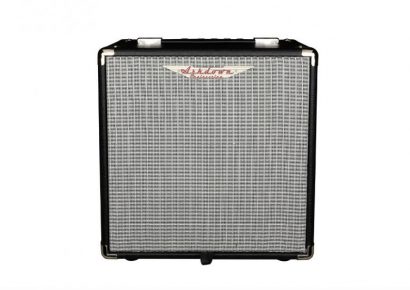When you factor in weight, price and overall versatility into the equation, it can all become a bit overwhelming. With the new Little Mark Vintage, however, Markbass just might have found a solution to this issue.
Billed as an end-result of everything the company have learned about bass amplification over the past 18 years, the 500w Little Mark Vintage is a top-shelf offering from the Italian firm, constructed with high-end analogue components, a tube preamp and even gold-plated circuits deep in the guts of the unit. Weighing in at a breezy 2.5kgs and compact enough to squeeze comfortably into a standard backpack, the Little Mark Vintage ticked almost all of my boxes before I even plugged my bass in. It’s very obvious from the get-go that this is the new golden child of the Markbass family, but no complaints here.
Although its name certainly implies it to be a suitable option for those bassists who favour funky, old-school flavours, there’s definitely nothing archaic about the Little Mark Vintage. Featuring two oversized controls for Gain and Master Volume, as well as a four-band EQ, configurable compressor/limiter, an additional EQ colour control and a DI level knob, the Markbass Little Mark Vintage is fully loaded with just about everything a modern bassist could want in an amplifier.
For those who like it loud, there’s plenty of gain on tap with the Little Mark Vintage, and gritty low-end tones are easy to achieve when you crank up that Gain knob. This is where the tube preamp really sings, too; letting you clock into a gooey, rich sound with plenty of harmonic character to take the tone of your bass from 0 to 100 real quick. Even if you’re keeping the Gain knob at a reasonable level, it’ll inject a lot of warmth into your sound – I found it to produce a pretty irresistible Motown sound when left around the ten o’clock mark, and when paired with the inbuilt compressor/limiter, it’s a surefire way to ensure your slap passages sound as crisp onstage as they do in your head.
Another feature which I found myself lingering on was the secondary EQ control, which offers three unique presets to suit different applications – Flat, Cut and Old. If you’re not too savvy with your tone knobs, or just want an easy way to dial into a reliable tone, you’ll find this to be an incredibly nifty feature. Without using the four-band EQ, the Flat preset is somewhat unforgiving, and unless you’re going for a woody semi-hollow tone in the studio or you’re using a lot of effects pedals, I can’t see it the favourite of many players. The Cut and Old presets, on the other hand, are glorious, with the Cut preset offering scooped mids and accentuated lows and highs and the Old scooping the high-end for a killer sounding vintage tone. And if you want to bypass the entire EQ section of the Little Mark Vintage and solely use the true grit of the amplifier and its balanced DI output (which also sounds superb due having its own transformer), there’s an option to do so via an external footswitch on the back of the unit.
Look, I’m really racking my brains to find a fault in this amp. The Little Mark Vintage churns out everything a gigging bassist should ever want in a bass head, and does it all without asking too many pennies from your pocket. If this is what Markbass are kicking off the decade with, then I’m very excited to see what lays in store for the coming years.

